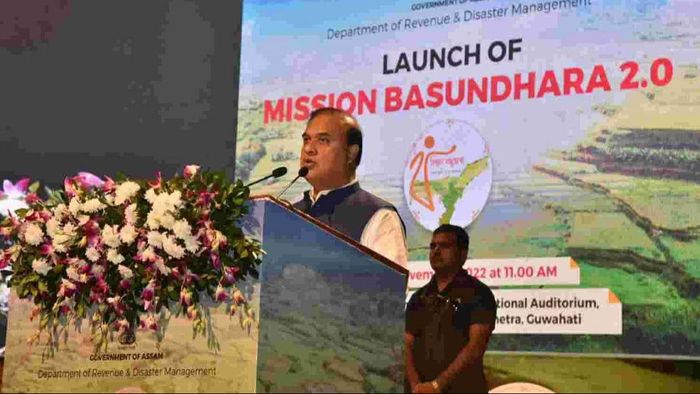Assam: Over 2,29,000 families to receive land pattas under Mission Basundhara 2.0
Since its inception on November 14, 2022, Mission Basundhara 2.0 has been instrumental in empowering landless indigenous people and weaker sections of society by securing their rightful ownership of land.

- Feb 22, 2024,
- Updated Feb 22, 2024, 10:52 AM IST
The Government of Assam under the leadership of Chief Minister Himanta Biswa Sarma has announced the distribution of land pattas to over 2,29,000 families across the state. This initiative carried under Mission Basundhara 2.0 aims to provide land rights to indigenous communities, ensuring their socio-economic stability and fostering inclusive growth.
Since its inception on November 14, 2022, Mission Basundhara 2.0 has been instrumental in empowering landless indigenous people and weaker sections of society by securing their rightful ownership of land. The program offers low or easy premium options for landless Scheduled Tribes, Scheduled Castes, Persons with Disabilities, widows without earning members, and cultivators with no regular income.
One of the primary objectives of Mission Basundhara 2.0 is to secure the land rights of tribal communities holding hereditary lands. Additionally, the initiative facilitates the recording of land ownership, enabling landholders to utilize their land as collateral for various purposes, thereby enhancing their access to credit and financial services.
The distribution schedule planned by the government, includes legislative assembly sessions across various constituencies. Central and State Ministers, Members of Parliament, Members of Legislative Assemblies, and Chief Executive Members will oversee the distribution process to ensure its smooth execution.
The distribution of land pattas marks a significant milestone in the state's journey towards social justice and inclusive development. By settling a total land area of 3,02,545 bighas in the Brahmaputra Valley and 1,214 bighas in the Barak Valley, the government has demonstrated its commitment to fulfilling the aspirations of its people.
Of the families set to receive land pattas, 84% belong to Scheduled Tribes, Scheduled Castes, Other Backward Classes, and More Other Backward Classes communities. This targeted approach underscores the government's dedication to uplifting marginalized sections of society and ensuring their active participation in the state's development narrative.